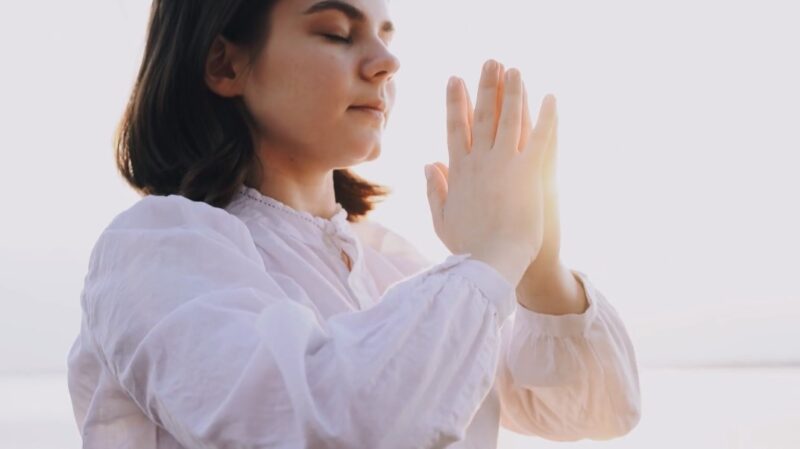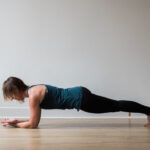If you’re a martial artist seeking to diversify your training regimen, yoga is a potent addition that can bring remarkable benefits. A dynamic blend of flexibility, strength, and balance, yoga extends beyond mere exercise, cultivating mindfulness and breath control—crucial elements in martial arts. In this blog post, we’ll explore how yoga and martial arts intersect and delve into some of the best yoga poses that martial artists can use for cross-training.
The Synergy between Yoga and Martial Arts

Martial arts and yoga may seem to occupy different ends of the fitness spectrum—martial arts focusing on combat and self-defense and yoga emphasizing calmness, flexibility, and inner peace. Yet, they share a common core, deeply rooted in physical and mental discipline, balance, breath control, and focus. The synergy between these disciplines provides a holistic approach to fitness that combines the kinetic dynamism of martial arts with the tranquility and balance that yoga promotes.
Yoga’s holistic benefits are well-documented: enhanced flexibility, improved balance, increased core strength, better body awareness, stress reduction, and enhanced focus. These elements also directly contribute to martial arts performance by promoting fluidity in movements, improving balance and stability, reducing the risk of injuries, and honing mental acuity. Thus, integrating yoga into your martial arts training can significantly elevate your physical prowess and mental resilience.
Now, let’s delve into some specific yoga poses that can complement and enhance your martial arts practice. Each pose will be accompanied by a brief description of its benefits and the martial arts aspects it complements.
1. Downward-Facing Dog (Adho Mukha Svanasana)
A staple in many yoga practices, this pose is a forward bend and mild inversion that stretches the entire body. It increases flexibility in the hamstrings and calves, strengthens the arms and shoulders, and improves circulation to the brain.
How it aids Martial Arts: Greater arm and shoulder strength can enhance striking power. Improved lower body flexibility aids in executing high kicks and dodging attacks. Increased blood flow to the brain can promote quicker decision-making in sparring situations.
2. Warrior II (Virabhadrasana II)
This pose strengthens the legs, opens the hips and chest, and cultivates focus. It encourages full body awareness, as you’re required to maintain a strong lower body stance while opening the torso and gazing forward.
How it aids Martial Arts: Stronger legs and open hips can enhance stance stability and kicking ability. The open chest fosters a relaxed, ready position, and the forward gaze is akin to the focus required in martial arts.
3. Tree Pose (Vrikshasana)
Tree Pose improves balance, strengthens the ankles and calves, and enhances concentration and focus. As a single-leg balancing pose, it can also help cultivate patience and mindfulness.
How it aids Martial Arts: Better balance directly translates to more effective movement in martial arts, from maintaining a strong stance to executing controlled kicks. Greater ankle strength can help prevent injuries during rapid direction changes common in martial arts.
4. Bridge Pose (Setu Bandha Sarvangasana)
This backbend pose strengthens the back and opens the chest and shoulders. It can also stimulate the abdominal organs, improving digestion.
How it aids Martial Arts: A strong back can contribute to better posture and reduce the risk of injury during falls or throws. Open chest and shoulders can improve breathing, which is essential for endurance during prolonged bouts.
5. Seated Forward Bend (Paschimottanasana)
This calming pose stretches the spine, shoulders, and hamstrings. It also stimulates the internal organs and can improve digestion.
How it aids Martial Arts: Greater spine flexibility can improve agility and reduce the risk of back injuries. Improved hamstring flexibility can enable higher and more fluid kicks.
6. Boat Pose (Navasana)
This core-strengthening pose challenges your balance while engaging your abdominals. It can also stimulate the kidneys, thyroid, and intestines.
How it aids Martial Arts: A strong core can improve overall strength and stability, which is essential for powerful strikes, throws, and maintaining control during grapples.
By integrating these yoga poses into your training regimen, you can augment your martial arts performance and overall fitness.
7. Triangle Pose (Trikonasana)
This pose stretches the hips, groins, and hamstrings, opens the chest and shoulders, and improves balance. It can also stimulate the abdominal organs and aid digestion.
How it aids Martial Arts: The flexibility gained in the hips and hamstrings can enhance the range of motion in kicks and stances. Improved balance and a more open chest can contribute to better performance and endurance.
8. Plank Pose (Phalakasana)
The plank pose is a powerful core strengthener that also works the arms, wrists, and legs. It improves posture and can help prevent back pain.
How it aids Martial Arts: Stronger core and arm muscles can improve power in punches and stability during grappling. A stronger back can help prevent injuries from falls and enhance posture for efficient movement.
9. Crow Pose (Bakasana)
This advanced pose develops arm and wrist strength, core power, and balance. It’s also an excellent pose for developing mental focus and body awareness.
How it aids Martial Arts: Strength gained in the wrists and arms can enhance grappling and blocking skills. Improved balance and body awareness can contribute to better control and precision in techniques.
10. Pigeon Pose (Eka Pada Rajakapotasana)
Pigeon Pose is a deep hip opener that also stretches the thighs, glutes, and psoas. It promotes flexibility and releases tension.
How it aids Martial Arts: The flexibility gained can contribute to a higher range of motion in kicks and stances. Releasing tension in these areas can also reduce the risk of strains and sprains.
11. Corpse Pose (Savasana)
This restorative pose may look easy, but it’s all about relaxation and stress relief. It trains the body and mind to achieve a deep state of rest, aiding recovery and promoting a mindful, balanced state.
How it aids Martial Arts: Enhanced recovery can speed up muscle healing after strenuous training. The mindfulness and relaxation skills learned can help manage stress and maintain calm during bouts.
Pranayama (Breath Control)

Let’s not forget one of the most vital aspects of yoga: pranayama or breath control. Pranayama exercises can help improve lung capacity, focus, and stress control—all beneficial for martial arts. For instance, Ujjayi breathing, also known as “Victorious Breath,” can help maintain rhythm in your movements and keep you calm and centered even in high-stress sparring situations.
Further Considerations
Remember, each person’s body is different. Always pay attention to your body’s signals and respect your limits. It’s important to maintain a consistent yoga practice for sustained benefits, but overdoing it can lead to injuries.
Also, consider seeking guidance from a qualified yoga instructor, especially when starting. They can help ensure correct alignment and provide modifications for different fitness levels or restrictions. A class environment can also offer camaraderie and support as you explore the integration of yoga and martial arts.
Incorporating yoga into your martial arts routine is a journey of self-discovery, health, and improved performance. Enjoy this holistic approach to training, and experience the enhanced mental clarity, physical strength, and inner peace that this fusion offers.
The Philosophy Connection

While yoga and martial arts share many physical similarities, their philosophical underpinnings also intersect. Both disciplines preach respect—respect for the self, for others, and for the practice. This mutual respect fosters a healthy training environment, deepens personal growth, and builds strong community bonds.
Also, martial arts and yoga both stress the importance of being in the moment. Whether you’re executing a difficult pose or defending against an opponent, the ability to focus entirely on the present is paramount. Practicing mindfulness can enhance the execution of techniques, improve reaction times, and reduce the likelihood of injuries.
Closing Thoughts
Embracing yoga as a cross-training tool for martial arts offers more than physical benefits. It cultivates mental fortitude, presence, and focus, underscoring the unity of mind and body that is fundamental to both yoga and martial arts. Whether you’re a seasoned martial artist or a beginner, incorporating yoga into your training can contribute to an elevated, holistic approach to your practice. Experience this symbiotic relationship and allow it to guide your journey in the martial arts realm.
Remember, it’s essential to approach both disciplines with respect and patience. Listen to your body, pace yourself, and keep your intentions clear as you embark on this enriching path.







